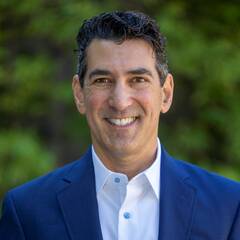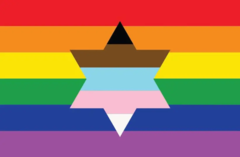Sabbatical reflections
07/31/2025 09:00:00 AM

I am so grateful to the Peninsula Temple Sholom community for the gift of my spring sabbatical. PTS deserves much credit for its forward-thinking thought regarding sabbaticals. Although sabbaticals are common in the synagogue world, only about 5% of non-academic companies offer a sabbatical. At PTS we saw that Allison Steckley and Karen Wisialowski came back from their sabbaticals refreshed and reinvigorated and that they brought back blessings to our community.
The sabbatical notion comes from our Bible, beginning with the notion of making one day out of every seven special and holy—Shabbat. We are also commanded in our tradition to till the fields for six years and then to let it lie fallow on the seventh, for the good of the land. Proponents of the sabbatical in the business world, like DJ DiDonna, senior lecturer at Harvard Business School, stress that it is crucial that the person taking a sabbatical switch out of their routine and do something very different from what the person does at work.
This can result in benefits like healing from the rigors of the work pace and routine; renewed and expanded creativity; and the opportunity to work on oneself. Sabbaticals give a person the opportunity to return to work with new perspectives to see what is working and what’s not serving the greater good. This was my experience. I am so grateful that I was given the chance to enjoy a peak experience and come back a changed person.
But it’s not only the person that takes the sabbatical that can benefit, it’s also the organization granting the sabbatical, which may be surprising to many. DiDonna explains that sabbaticals build resilience in the organization, giving people the chance to step into new roles and grow significantly. It also builds authentic organizational culture, including tenure and loyalty, as well as innovation and problem-solving.
All of this was on my mind as I planned what I intended to do with my time off. The following is a few of the ways I tried to switch my daily routine and gain new and different perspectives for three months:
Reading: I love to read and during my sabbatical I tried to read a varied array of literature and periodicals. Among the books read include Bottom of the 33rd: Hope, Redemption, and Baseball's Longest Game, by Dan Barry; The Reading List, by Sara Nisha Adams; and Plan B, by Anne Lamott. For the first time in my life, I regularly read The New Yorker cover to cover.
Baking: I love to eat baked goods, but I’m not normally a baker. This spring, for the first time in my life, I made not one, but two loaves of bread with my wife, Sandra—a whole wheat loaf, and a beautiful sesame seed challah. Both tasted delicious and I was rewarded with the satisfaction of having learned a new skill.
Arts and Crafts: Sandra’s and my trip to Japan allowed us to tap into different kinds of craft experiences. I’m not particularly good at crafts, to put it mildly, but I thoroughly enjoyed the Japanese art of roketsu, a traditional textile dyeing method. It was a pleasingly meditative act to trace an artistic representation of a bamboo design onto fabric and then dip the fabric into indigo dye, yielding a reverse pattern. Many steps after tracing, I had a beautiful piece of art to take home as a wonderful memory.
In addition, at a traditional craft house in the town of Hakone, I had the opportunity to create wood art out of geometric shapes. I am the proud creator of a beautiful coaster made of wood that I glued, sanded, and waxed myself. Finally, at a Buddhist temple in Kyoto, I had the opportunity to engage for ninety minutes in the meditative practice of hand-transcribing Buddhist scriptures, an exercise in mindfulness and reflection.
Travel: In Japan we had the opportunity to experience a different part of the world, and with it, a different culture and language. We live in a great big world, but our daily routines can metaphorically shrink our world, so traveling helped us feel expansive. One place I will never forget visiting is Hiroshima, and particularly the children’s peace monument, where the story of one girl, Sadako Sasaki, is memorialized. The effects of nuclear war and the frightening power of modern weapons were soul-shaking.
Sandra and I also had the opportunity to travel to Italy and Greece, and we drank deeply of the history and culture in those areas, dating back thousands of years. We appreciated the art, the culture, and in Greece, the place where democracy was first practiced and implemented. We also were moved by how precarious and fragile civilizations were.
During our travels we tried to experience the Jewish culture in the area as much as possible. Highlights included our visit to the Jewish Museum of Greece in Athens, where we learned about the 2,300 years of Jewish history and culture in Greece. In museums like this one, I felt pride and joy in seeing how Jewish life thrived for so long, while at the same time feeling a sense of doom, because I know how the tide of history turned. We were moved to learn how strong the leadership of the Greek Orthodox Church was in its efforts to protect their Jewish fellow citizens.
When we were in Crete, we toured the only synagogue on the island, Etz Chayyim. It is the only remnant of the rich Sephardic Jewish history in Crete, which was completely wiped out by the Shoah. Today’s community, revived at the end of the twentieth century, is a welcoming one where locals and visitors come to celebrate the Sabbath, holy days, and life cycle events. We also attended the Kabbalat Shabbat service that night, and I had the honor of leading V’shamru. In that moment, I felt a deep sense of Jewish resilience, history, and community.
The joy of meeting new people and learning about their lives helps me find new perspectives. The interesting conversations we had with people gave me a chance to hear about their hopes, dreams, and everyday concerns, allowing me to come back with new ways of looking at issues, locally and throughout the world.
The Takeaway: In the end, the strongest feeling from the sabbatical was that it was wonderful to be away and experience unfamiliar things, and it was lovely and sweet to feel in my kishkes how much I love what I do as a rabbi. I love serving this community and am excited to be back at the synagogue, engaging in the sacred work I treasure.
I look forward to seeing you soon and catching up on your lives.






